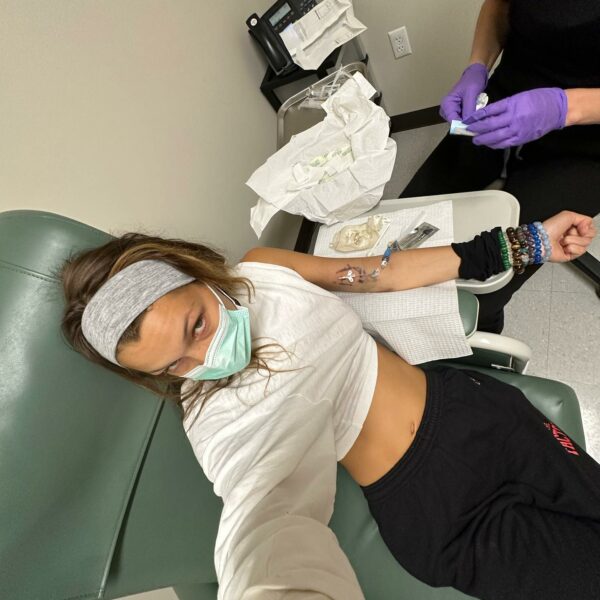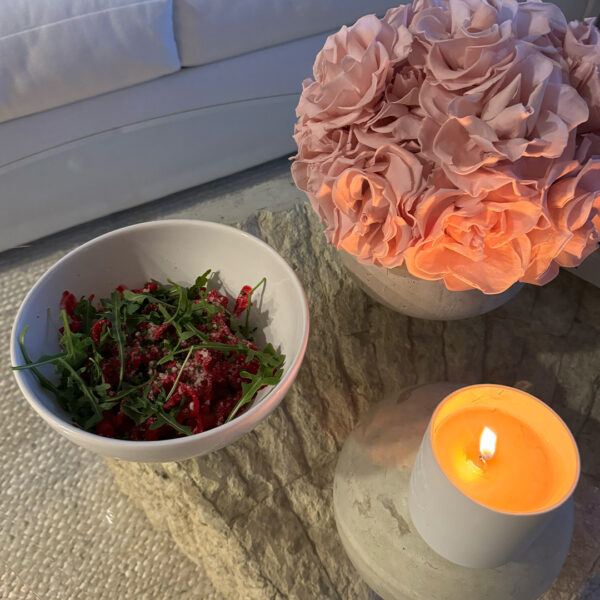When we hit our 30s, it’s like a magical little light goes off. We tend to care a little less what people think, settle into our own skin, and know ourselves better. At the very same time, our bodies shift into some major changes that will make this decade a marked one.
The things we do in our 30s to maintain our health and prevent future issues can make a huge difference in our longevity and overall wellness as we age, so it’s important to know what’s happening, be hyper-aware of how our bodies are adapting, and roll with the punches by nurturing, nourishing, and being gentle on ourselves. And also f*cking. It’s a good time to get some. We’ll explain.
Once past our glorious and yet totally unappreciated 20s (what a waste of bounce), our skin’s collagen production slows down, like way down. Collagen is responsible for our skin’s elasticity and resilience, which is why a sign of aging is sagging skin and wrinkles. Consider collagen our skin’s plump rebar or scaffolding.
Not all hope is lost immediately, however. While we can’t keep up with children and young adults in their 20s, we can help build up some collagen synthesis with a healthy diet, consuming alcohol in moderation, avoiding cigarettes, and really upping our vitamin C game. Vitamin C is one of the building blocks of collagen, so a diet rich in C will kick collagen production up a notch, even into our golden years.
Another way to plump up collagen production in the skin is to stimulate it, with small micro-injuries. Think microneeding, dermarolling, and skin stamping. The small needles make tiny punctures that stimulate the skin to heal, pumping out collagen. We’re big fans of these methods here at Poosh.
Shop our anti-aging collection:
Fertility, while not obsolete by any means at this time, does begin to decline in our 30s. Our number of eggs is slowly decreasing, which does a lot more to us than narrow the child-bearing window. “Hormones” are not a blanket term, either. They are complicated, and there are many different kinds of hormones with different functions.
For some women, they may experience a drop in estrogen in their 30s, which can affect their sex drive and cause breakouts, bone density loss, and weight gain. Others may see a drop in muscle-building hormones, like human growth hormone (HGH) and testosterone, which can also slow metabolism and lead to weight gain, and other funny symptoms like little thick chin hairs, breakouts, brittle nails, and slow-growing hair. The best that we can do is support our hormones with a healthy diet that is nutritionally dense and full of healthy fats, like fatty fish, avocado, olive oil, and nuts.
On the flip side, some of these hormone shifts, coupled with our state of stronger self-acceptance, can lead to a higher sexual desire and ability to orgasm, making our 30s and even our 40s a fun, spicy time in our sexual peak.
Shop our daily supplements collection:
Science tells us that our metabolism decreases with age almost directly in line with it. Isn’t that sweet? So organized. Thank you. It’s due to our skeletal musculature. And it’s actually tied to hormones. So when our estrogen, among other key hormones, begins to dip, we lose both bone density and muscle. As muscle and bone decrease, our fat increases, and this ratio to total body mass causes a dip in basal metabolic rate.
If that feels a little chicken-before-the-egg of our bodies, you’re not alone. Because a lot of this has to do with the aforementioned hormone fluctuation, it’s an excellent idea to chat with a doctor about hormone replacement therapy. Or, if you’re young and just want to take care of yourself preventatively, diet and exercise are key. A nutritionist can help outline what foods are best to support which hormones, and there are different modes of exercise that work better for different stages in our lives. As we age, it’s important to start incorporating more weight training to combat the loss of muscle and bone—that is the best way to support an aging metabolism.
Hello, your future called to tell you it’s out front. Idling. Engine on, in park. It’s here! Our 30s are definitely a time when we can embrace our youth. We are still young, and the world is still our oyster, and yet, that quarter-life crisis is weighing on us. We go from “you have plenty of time to figure it out” at 29, and then, very rapidly at 30, it’s “so have you figured out what you’re doing with your life?”
It’s a time of reckoning, big decisions, financial choices, spending, saving, and setting up the rest of our lives, and it weighs heavily on us. We suppose that’s why there seems to be a heightened sense of panic for us millennials in our 30s. This BBC survey says the dreaded “mid-life crisis” is happening a little earlier. It’s important to start adapting mindfulness into our daily routines, and the younger the better. These are habits that train our brain, preventing crises from starting in the first place. But take it from us, 30 really is young. So is 40. So is 50. It’s a mindset.
Shop our mental health collection:
The content provided in this article is provided for information purposes only and is not a substitute for professional advice and consultation, including professional medical advice and consultation; it is provided with the understanding that Poosh, LLC (“Poosh”) is not engaged in the provision or rendering of medical advice or services. You understand and agree that Poosh shall not be liable for any claim, loss, or damage arising out of the use of, or reliance upon any content or information in the article.
Up next, be the first to know our weekly content and sign up for our Poosh newsletter.






































